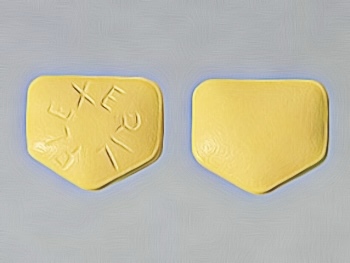If you’re dealing with neck or back pain, you’re likely dealing with a condition that causes your muscle to spasm or continuously exist in states of pain. To combat such instances, your doctor may end up prescribing a muscle relaxant, which helps ease the pain, contractions, and even cramping. Keep in mind that these things are most likely out of your control, and lead to prolonged painful conditions if left untreated.
While it’s true that various treatments can help manage painful spasms, your doctor will ultimately decide on a muscle relaxer prescription. You’ll also likely be told to drink a pain killer alongside the meds, such as ibuprofen or acetaminophen to better manage the pain. In most cases, however, a muscle relaxant will suffice.
This will help you sleep better at night, especially since these medications can cause uncontrollable drowsiness. Powerful, though, these substances might be, those with low tolerance often develop an addiction to muscle relaxants. Others end up taking these medications without a proper prescription or perhaps end up resorting to drinking more than the recommended dosage.
The most highly addictive muscle relaxants in the market today are Robaxin and Flexeril, which we discuss in this comprehensive guide. If you or a loved one is currently suspected of or suffering from a muscle relaxant addiction, read on:
Robaxin vs Flexeril
Robaxin
Mostly known by its generic name of methocarbamol, Robaxin has been around for decades, dating back to the 1960s. Although its exact components are generally unknown, it’s used mostly to relieve an individual of various bouts of discomfort. It provides a sedative effect and does not generally affect muscle contractions or spasms.

They’re mostly available on the market as an oral tablet, which can be taken either in a 500 mg or 750 mg pill. Other people make use of injections, but dosage should only go as far as four times a day. If more is needed, a doctor will prescribe the right dosage for the patient.
Flexeril
Flexeril, otherwise known as its generic name cyclobenzaprine, is a drug that is commonly used as a short-term medication for muscle spasms. This drug is the best-studied muscle relaxer. It was first approved by the FDA in the 1970s. The drug works on the central nervous system (the brain and spinal cord) to reduce motor activity. It has a chemical structure that’s similar to tricyclic antidepressants and thus brings similar side effects such as sedation and dry mouth.
Flexeril was initially approved by the FDA in the 1970s. It is taken orally and primarily works on the brain stem and spinal cord in the CNS, which helps reduce motor activity. Flexeril is also structurally similar to tricyclic antidepressants and has similar side effects such as headaches, dry mouth, nausea, and sedation. The drug is not recommended for use for more than a few weeks.
Flexeril has been discontinued but cyclobenzaprine can be found under its generic name or two other brand names, which are Amrix and Fexmid. With over 18 million prescriptions in 2018 alone, cyclobenzaprine was the 43rd most commonly prescribed medication in the US.
Uses: What are Robaxin and Flexeril used for?
Both Robaxin and Flexeril are approved by the FDA to provide relief for muscle spasms from tetanus or musculoskeletal conditions of sudden onset. The two drugs are typically prescribed to treat musculoskeletal pain such as neck pain or back pain, which are common problems for adults in the US. Lower back pain is especially prevalent, with as much as 80% of adults experiencing the problem at some point in their lives.
A 2004 study found that Flexeril also provides some form of pain relief for those who suffer from fibromyalgia, a medical condition associated with chronic widespread muscle pain and tenderness. It was found to help alleviate pain symptoms but did not help with fatigue and tenderness.
What is Robaxin?
As previously mentioned, Robaxin is a muscle relaxant that is FDA approved. It’s prescribed by doctors to treat pain and discomfort, but particularly those musculoskeletal conditions like back pain, neck pain, and even sprains. It’s known in the market as a generic drug called methocarbamol.
Side Effects
Although Robaxin doesn’t generally cause any unwanted symptoms or side effects to occur, healthcare professionals only recommend patients to use it for actual medical reasons. Transitioning on and off the drug must also be administered carefully, as anything too abrupt can cause serious health risks.
Many end up being highly dependent on the drug, but thankfully, various detox programs are readily available for an effective transition back to sobriety. It’s also important to take note of the following side effects, most of which are common:
- Lightheadedness and dizziness
- Drowsiness
- Confusion
- Headaches, nausea, and vomiting
- Flushed skin and a lowered heart rate
What is Flexeril?
Flexeril or cyclobenzaprine is a muscle relaxant drug that is prescribed to treat muscle spasms associated with acute musculoskeletal conditions. It is a central nervous system depressant and works similarly with tricyclic antidepressants. It works by blocking nerve impulses and slowing the sensation of pain from reaching the brain. The drug is currently available in immediate-release and extended-release forms.

This drug is a short-term treatment for muscle pain and is used alongside physical therapy to treat musculoskeletal injuries. Flexeril also has some medical implications for patients with fibromyalgia, namely relief from the muscle pain associated with the illness.
Because the drug works closely with neurotransmitters in the central nervous system, it has the potential for abuse, addiction, and dependence. Flexeril can cause feelings of relaxation as well as euphoria, and a person may become addicted to this. However, although addiction to this drug is possible, it is uncommon.
The effects of Flexeril diminish after a few days, and this tolerance can lead a person to take more than what is prescribed. Although the drug is not usually prescribed for more than a few weeks, increasing amounts of this substance may lead to dependence and addiction.
Side Effects
Flexeril symptoms or side effects are known to be extremely uncomfortable, but they’re rarely severe or life-threatening. Others also report to catch a mild cold or flu and can peak after four days. The withdrawal process often lasts for two weeks, however, and the common side effects can include the following conditions:
- A dry mouth
- Drowsiness and fatigue
- Headaches and nausea
- Blurry vision and unpleasant taste in the mouth
- Confusion and nervousness
- Abdominal pain or discomfort, along with acid reflux
In more serious cases, however, patients may end up suffering from abnormal heartbeats, strokes, heart attacks, and even seizures. It’s best to seek medical attention as soon as any of these episodes occur.
Breaking Away From the Clutches of Robaxin and Flexeril Dependence
Although muscle relaxants are known to help treat or manage acute pain and muscle spasms, it can be easy to fall into dependence. This is particularly true for Robaxin and Flexeril, which are commonly prescribed in various medical facilities. Dependence on these substances can lead to serious complications, which can affect an individual both mentally and physically.
Sources:
https://www.accessdata.fda.gov/drugsatfda_docs/label/2003/011011Orig1s070s071lbl.pdf
https://www.accessdata.fda.gov/drugsatfda_docs/label/2003/017821s045lbl.pdf

